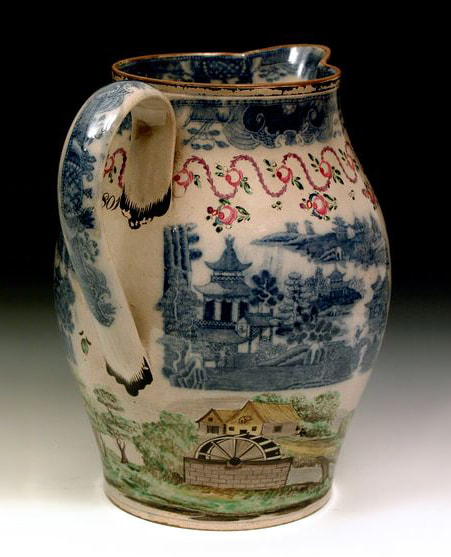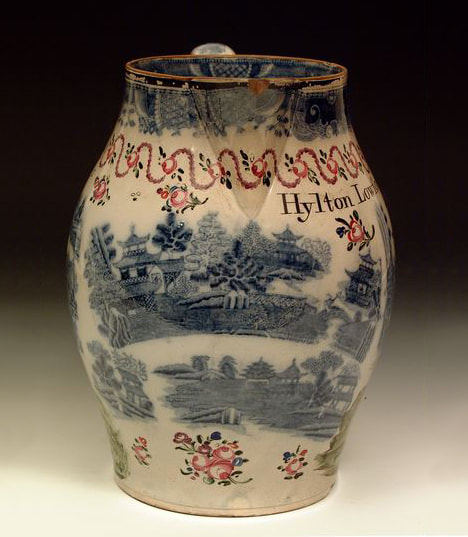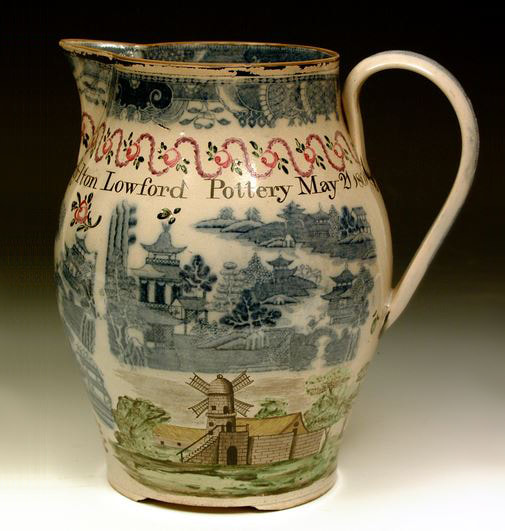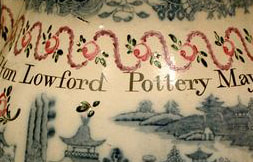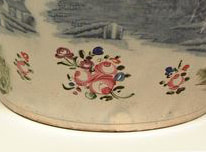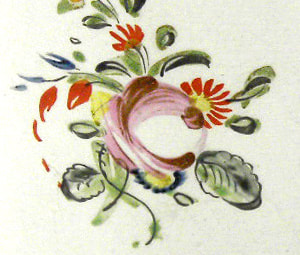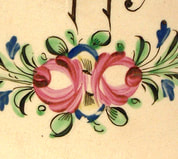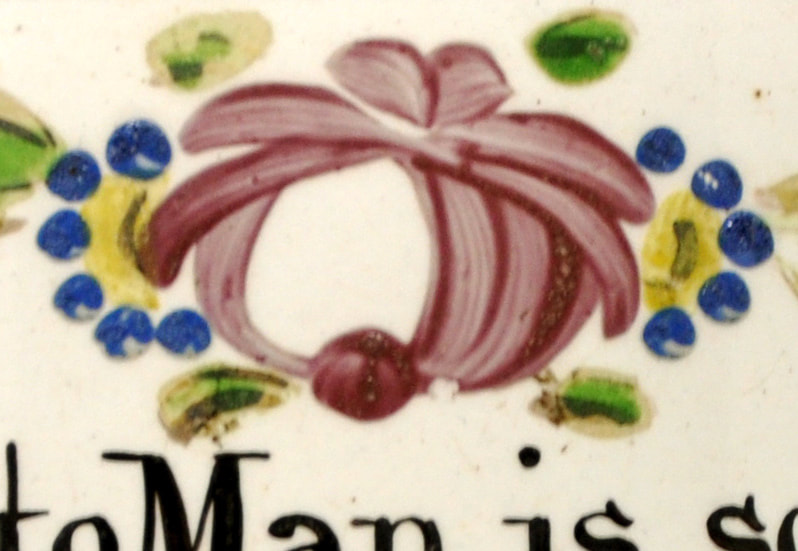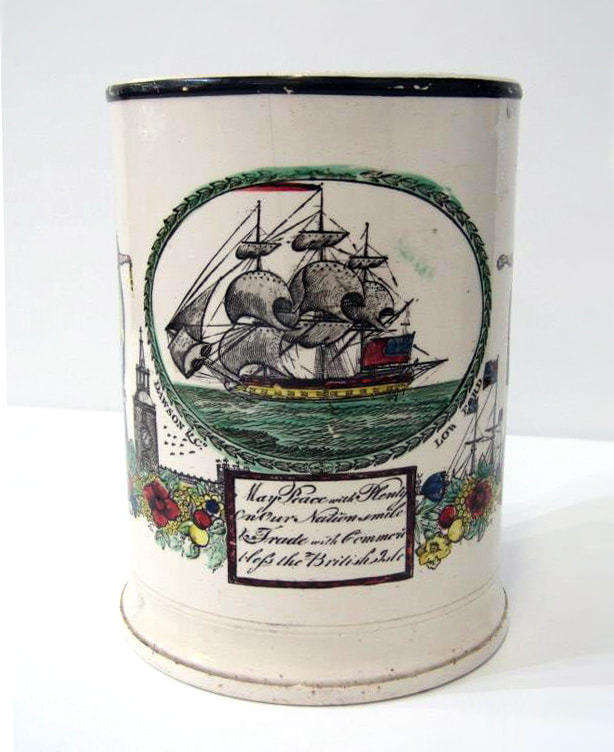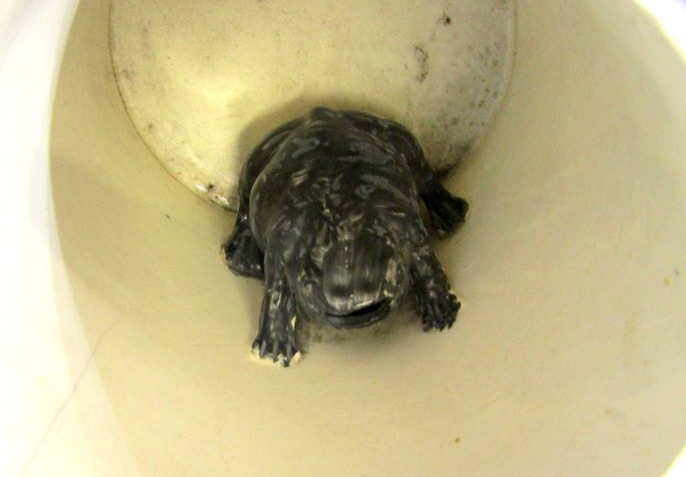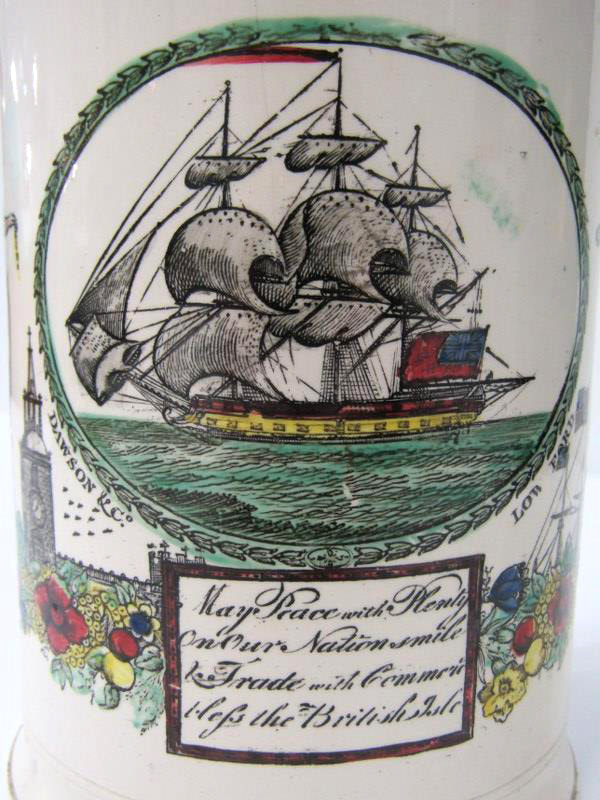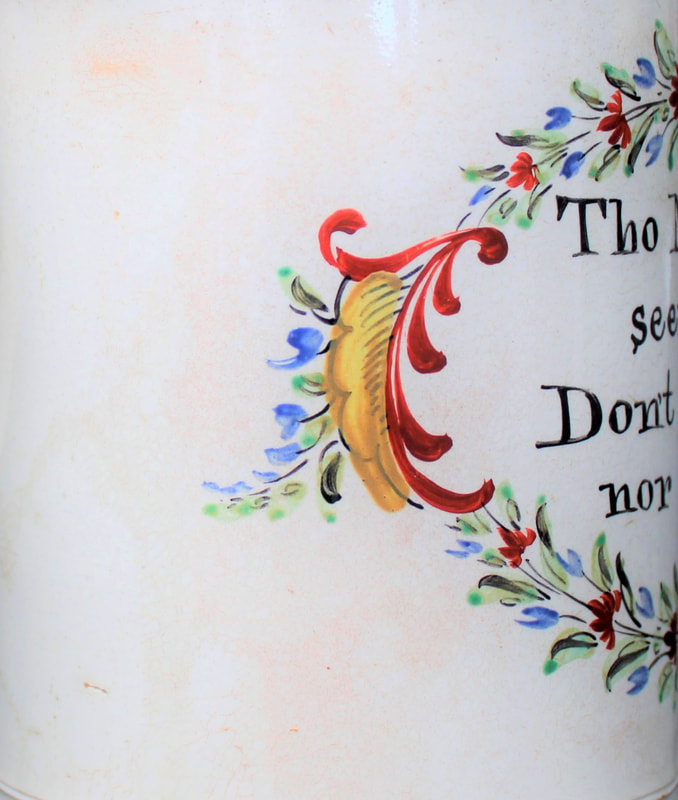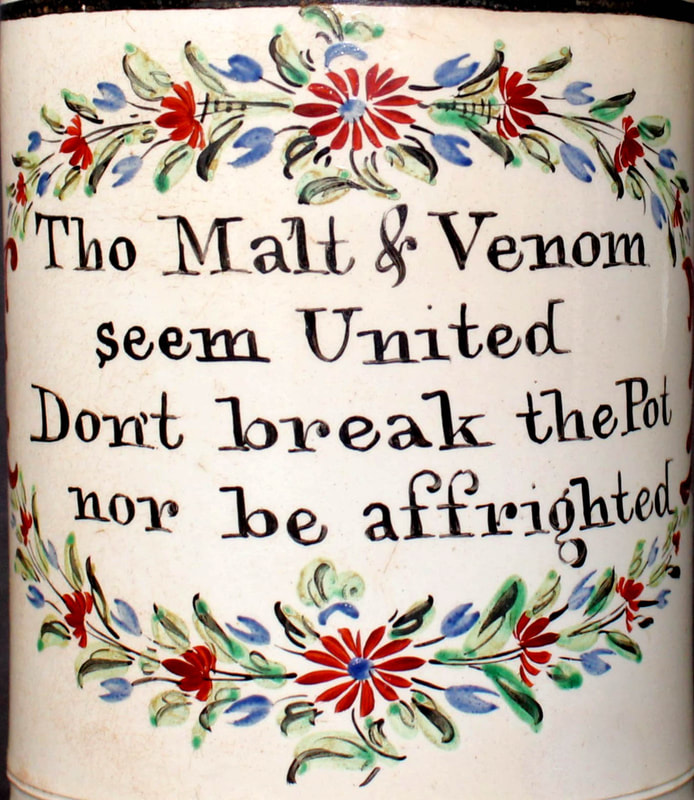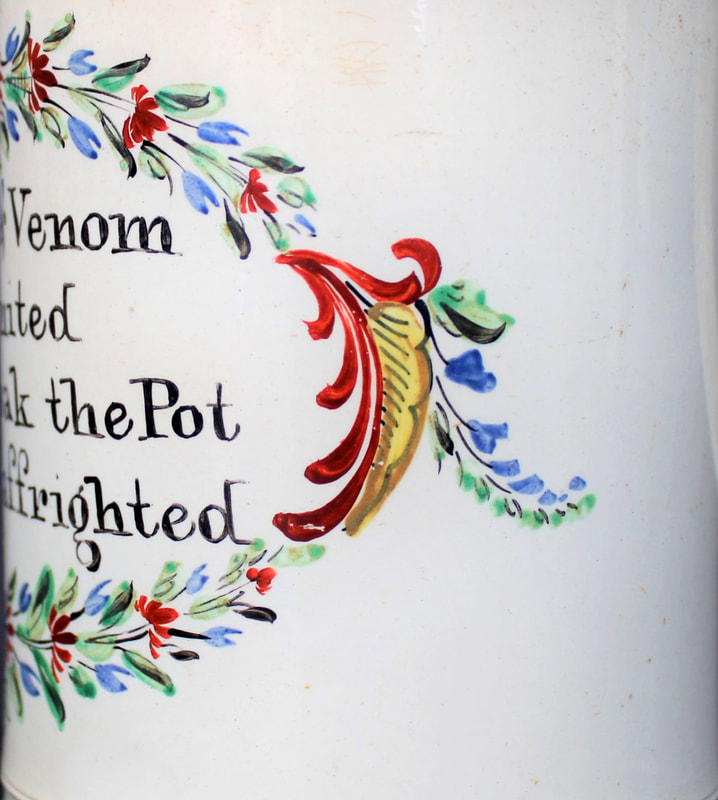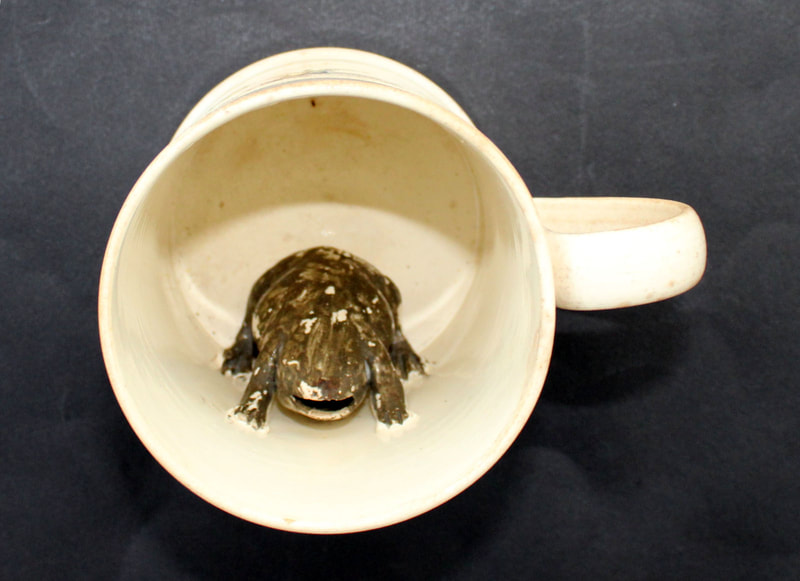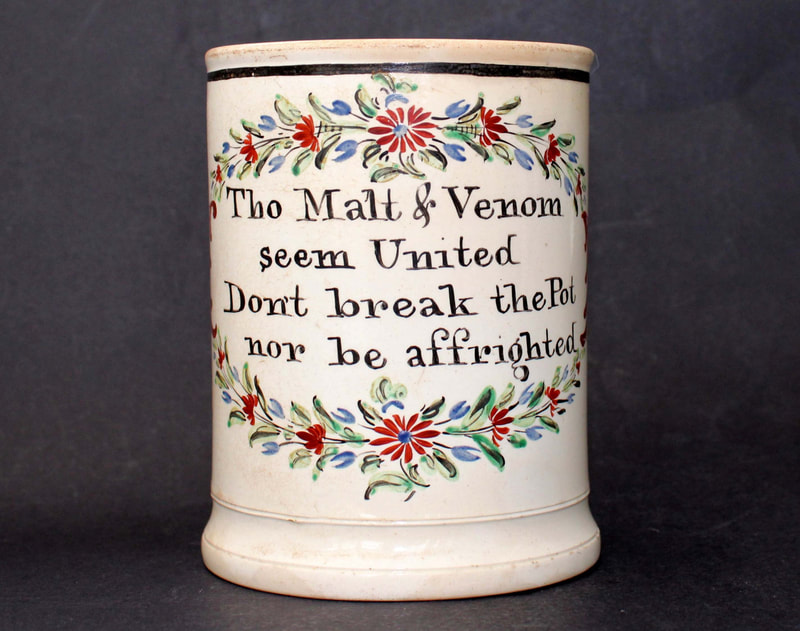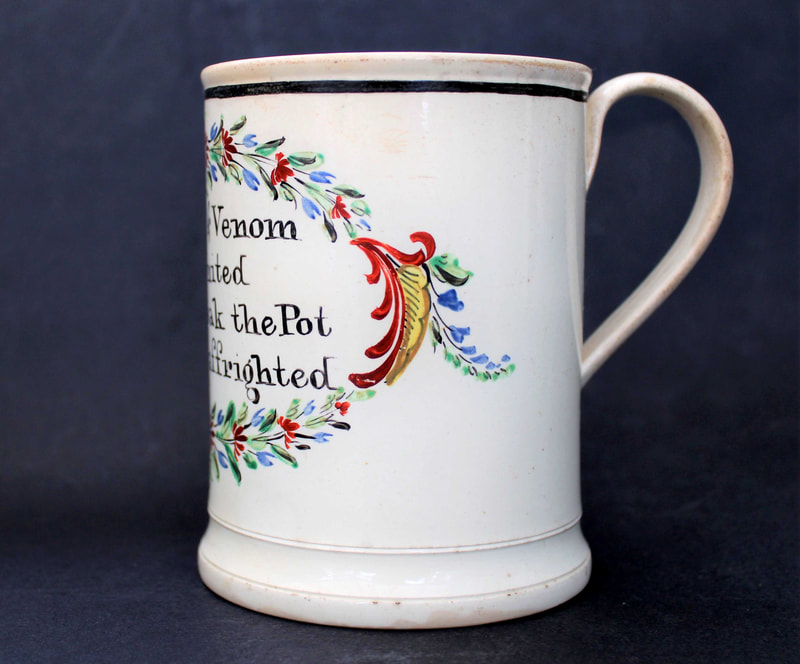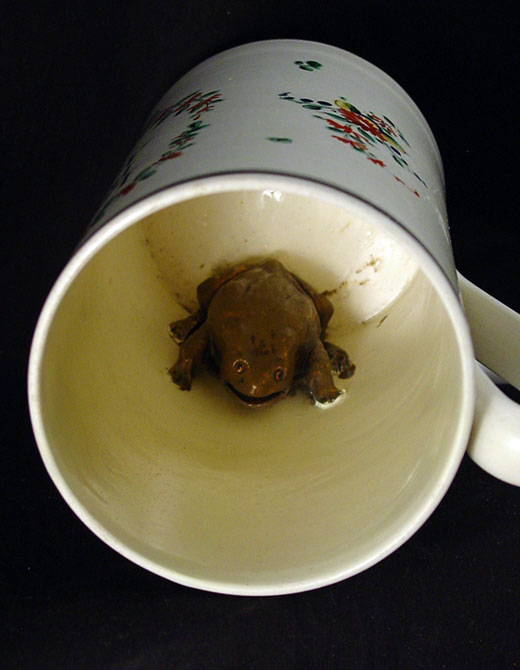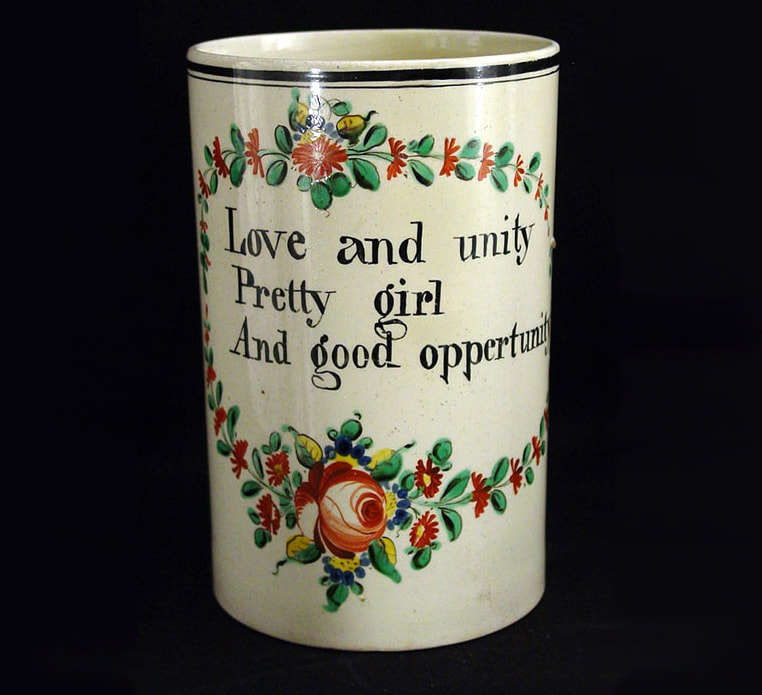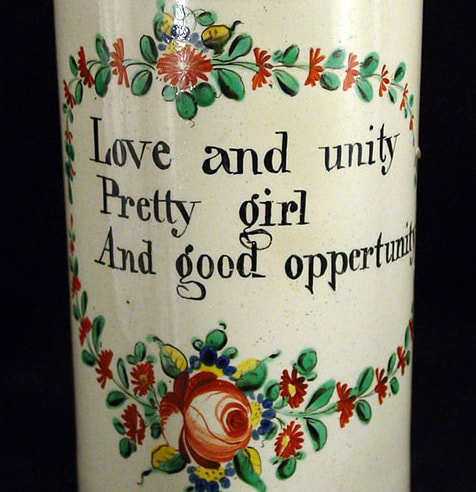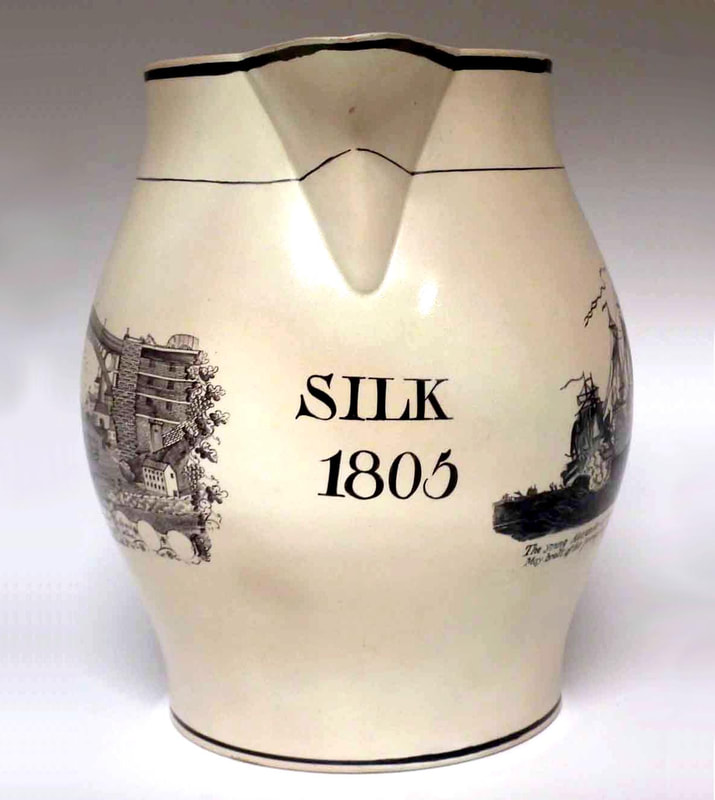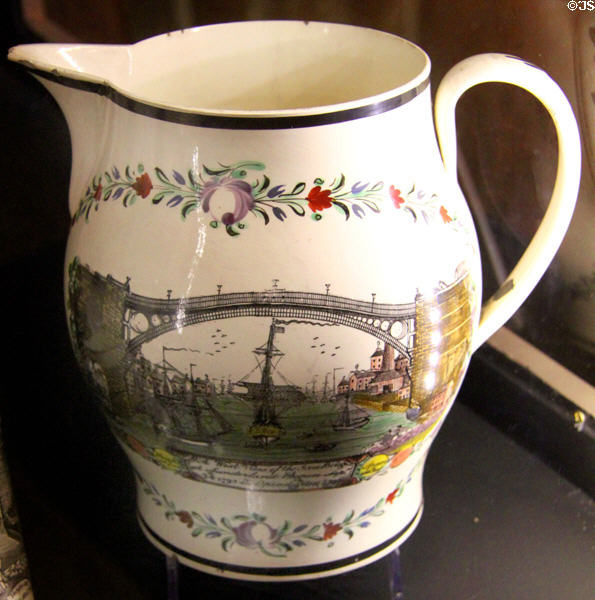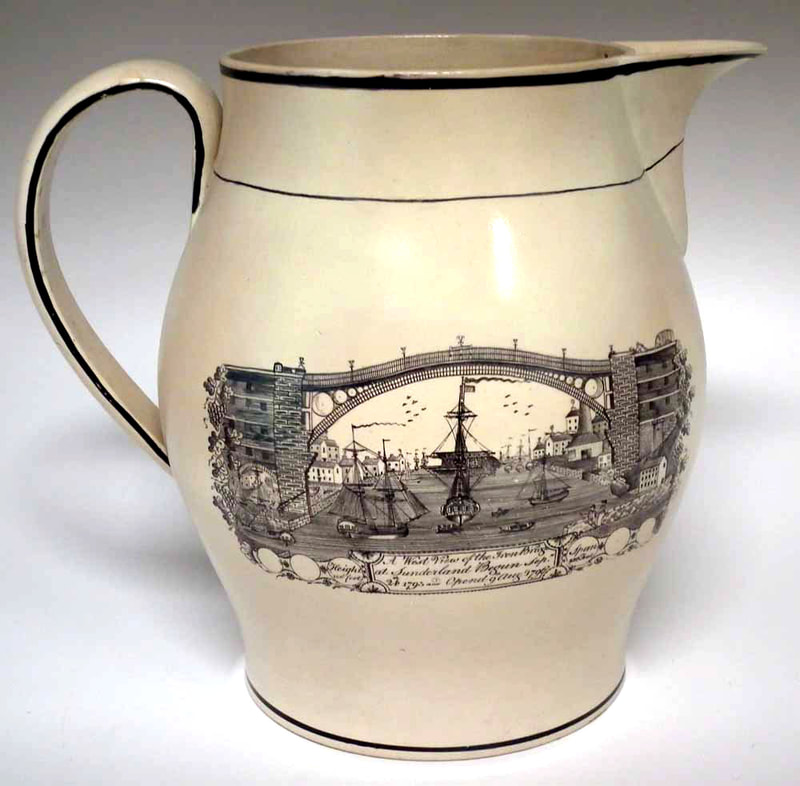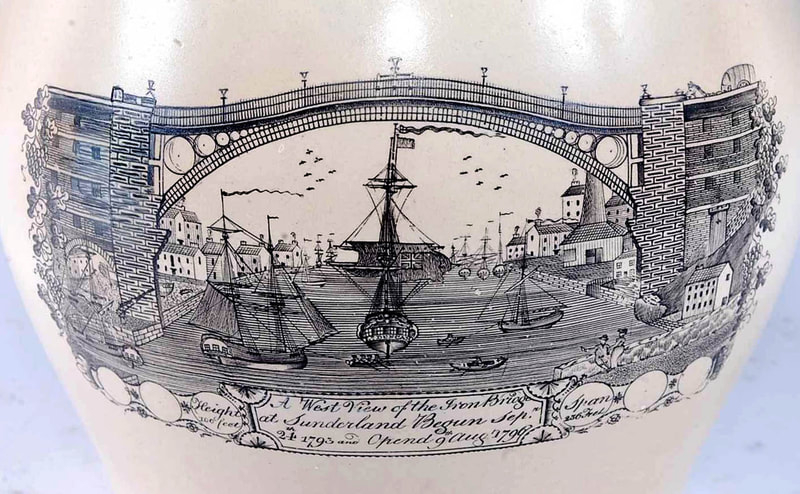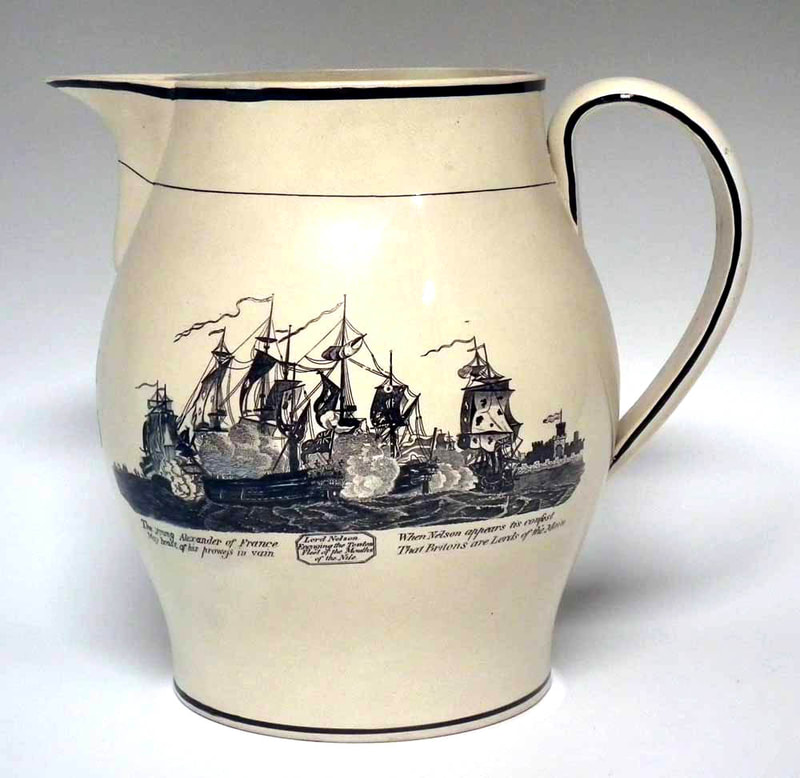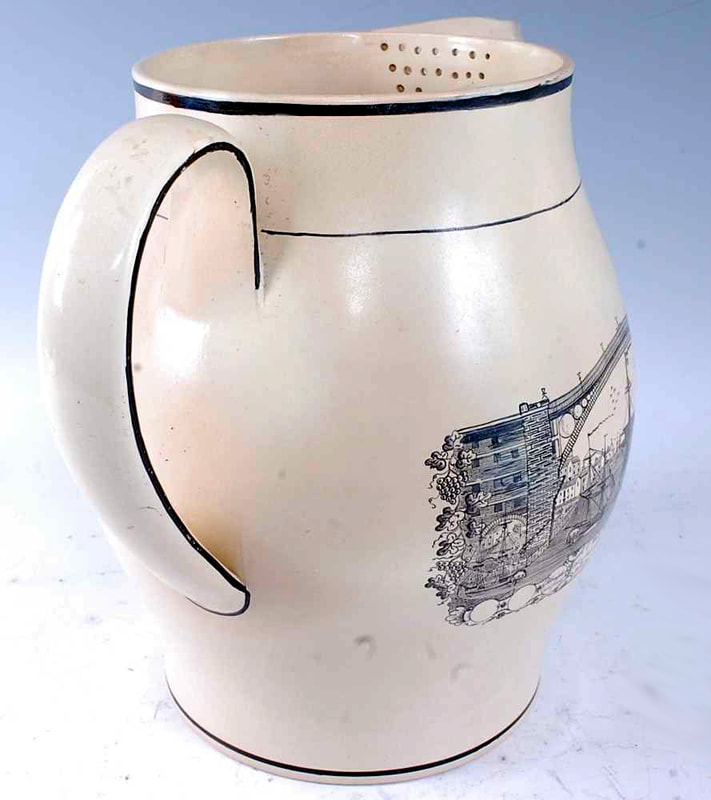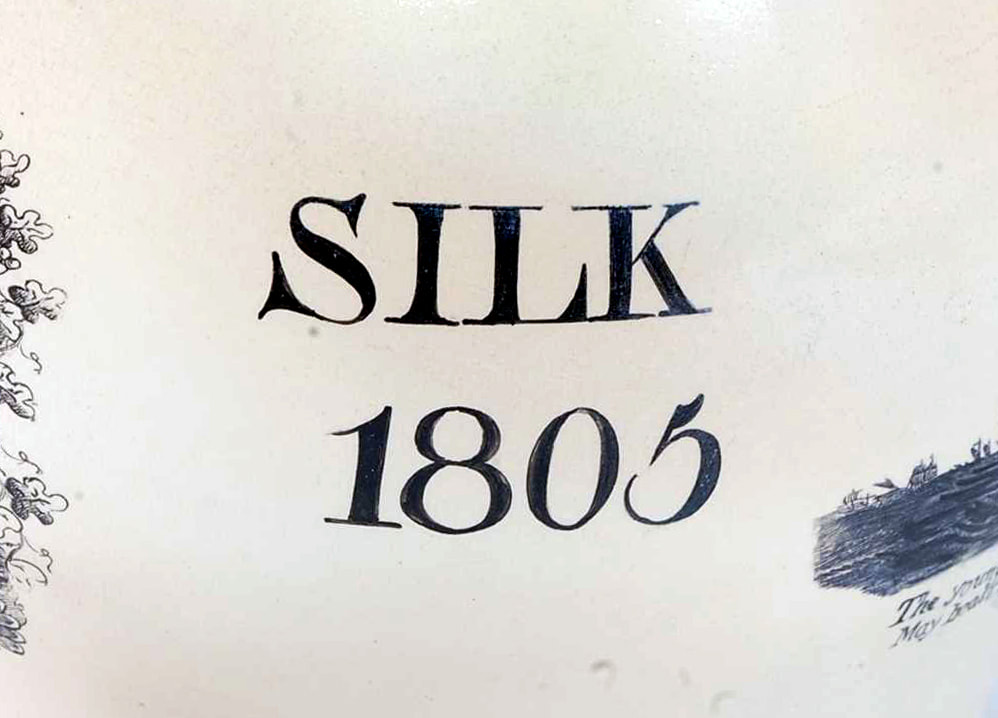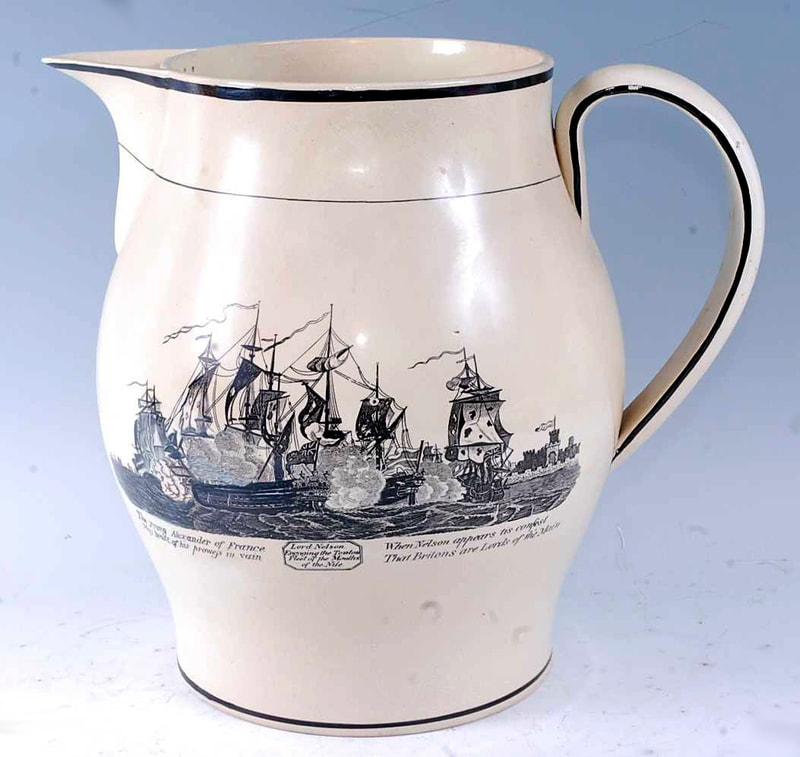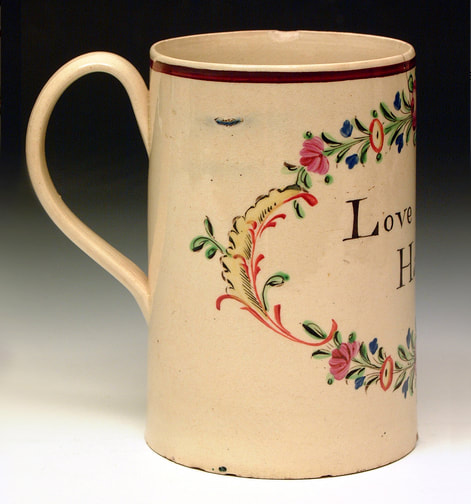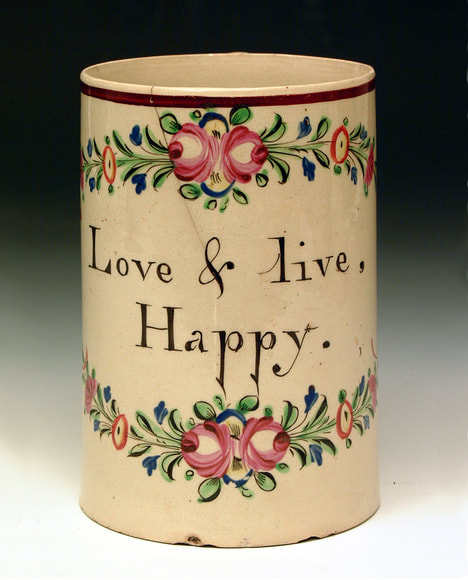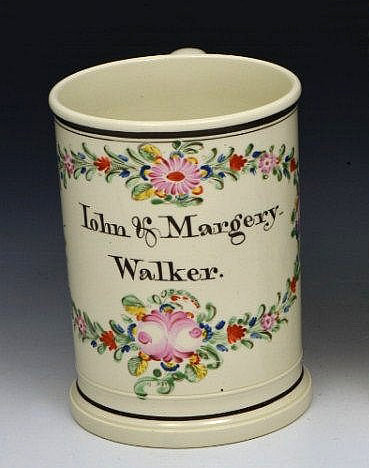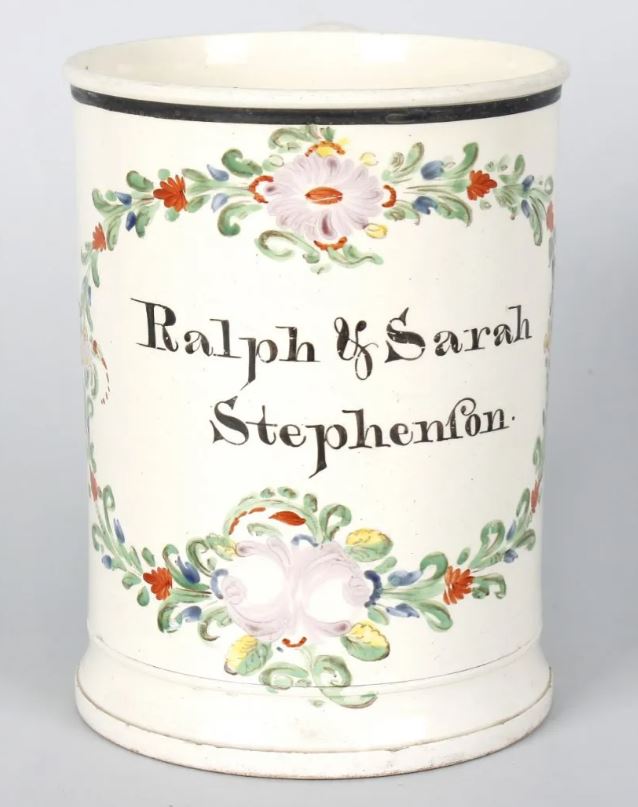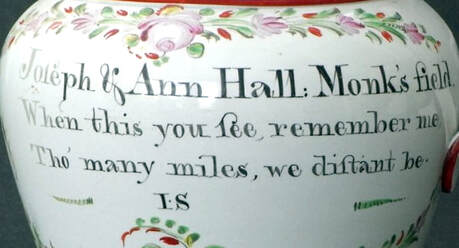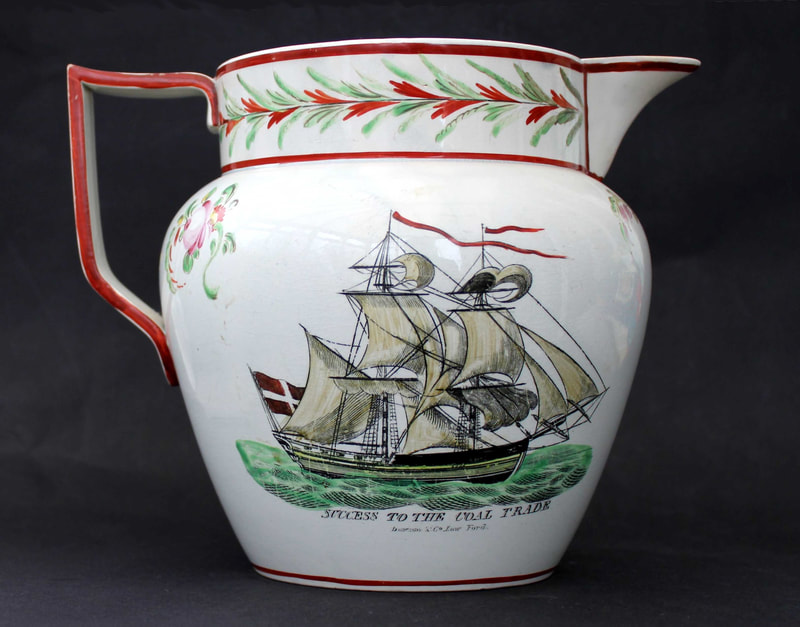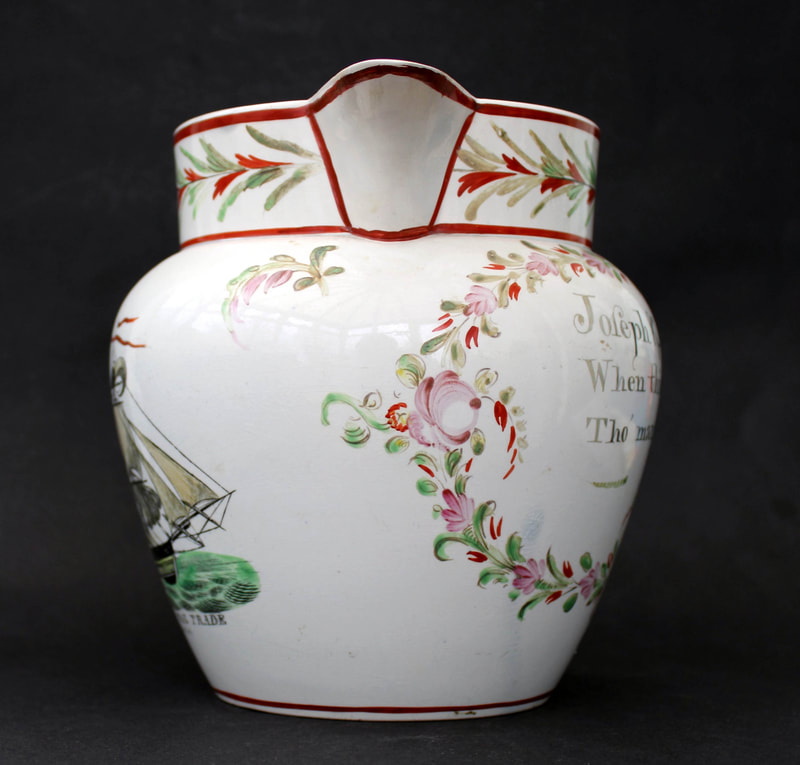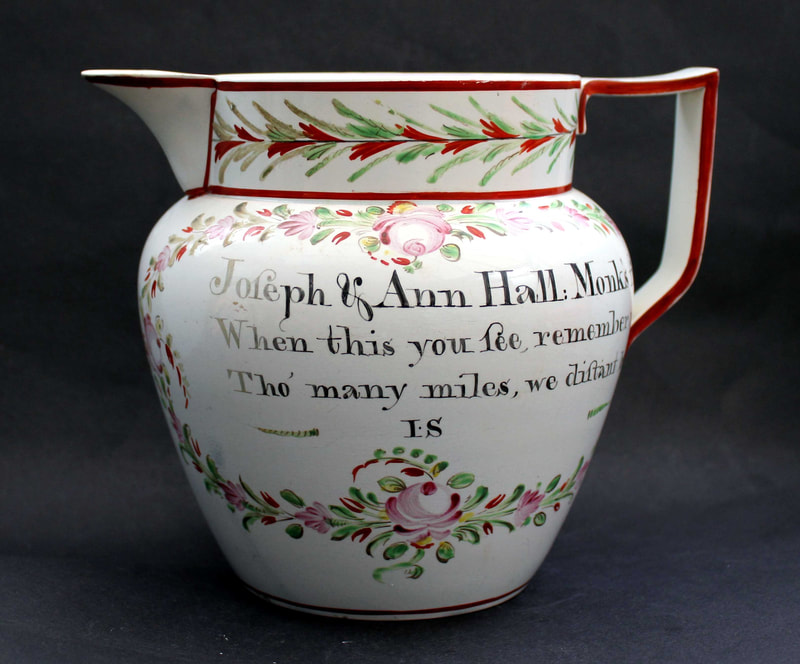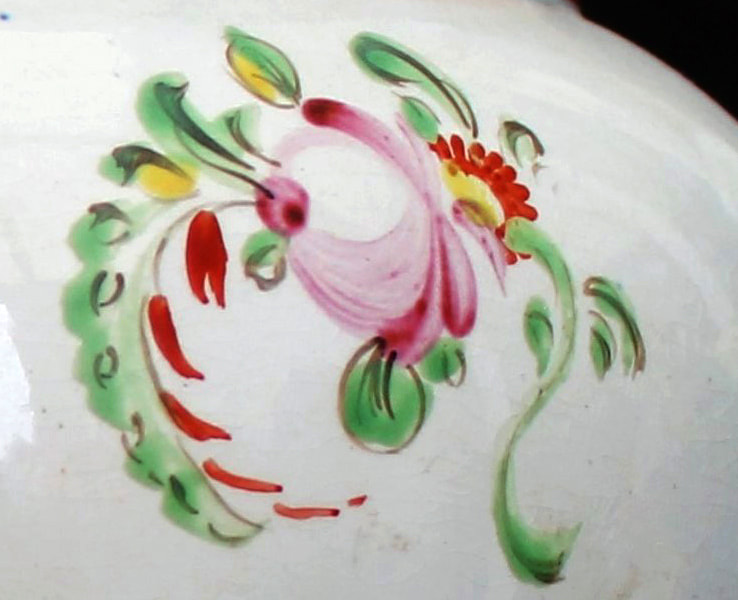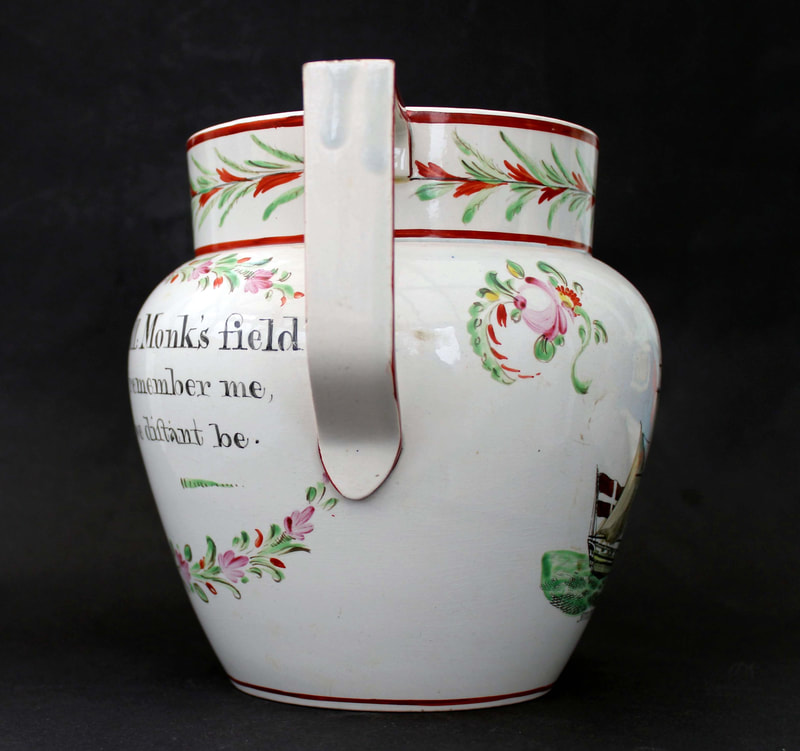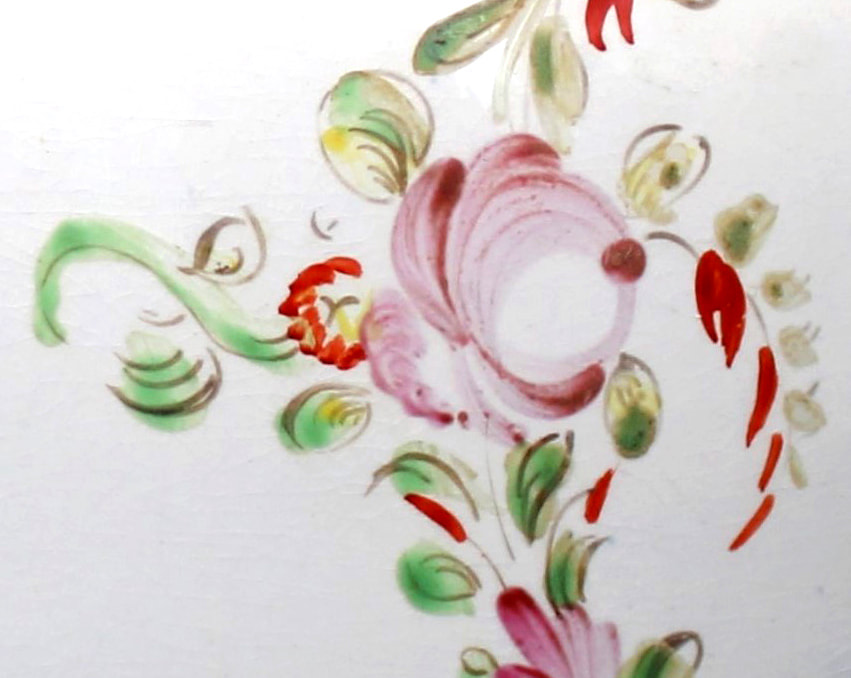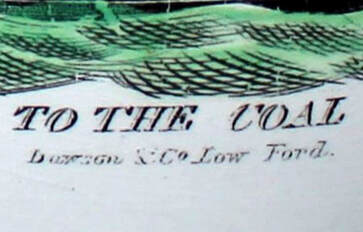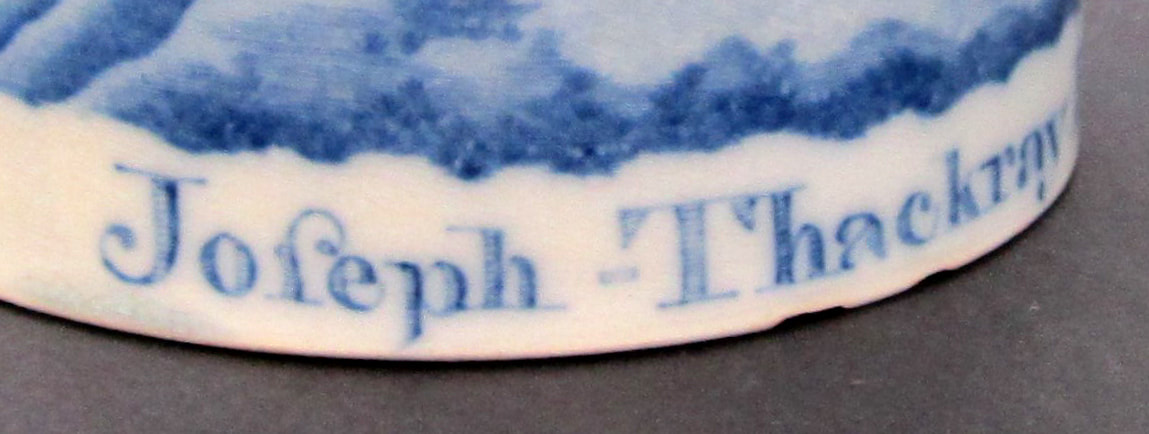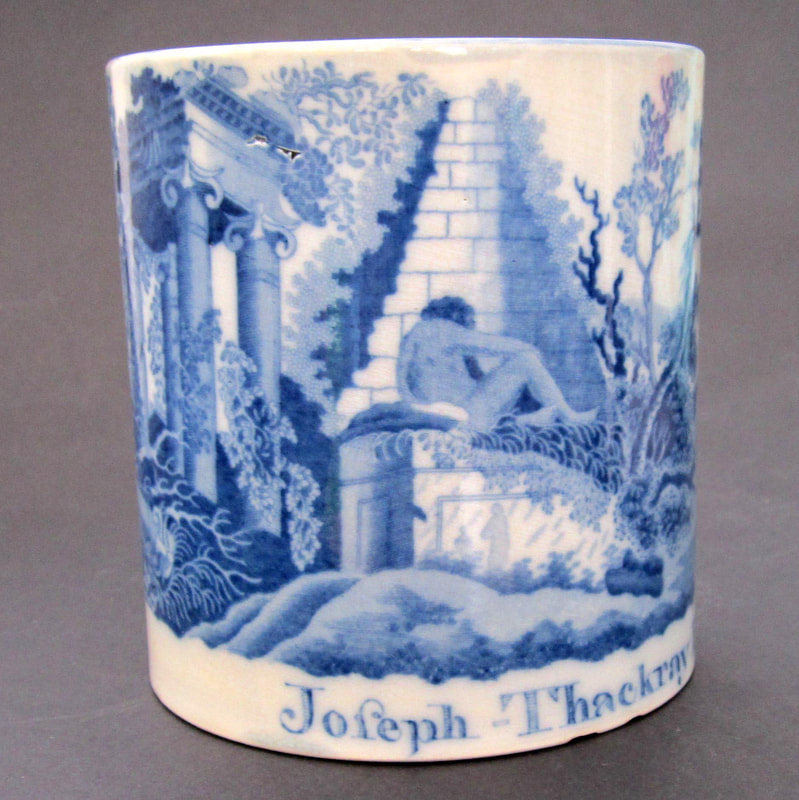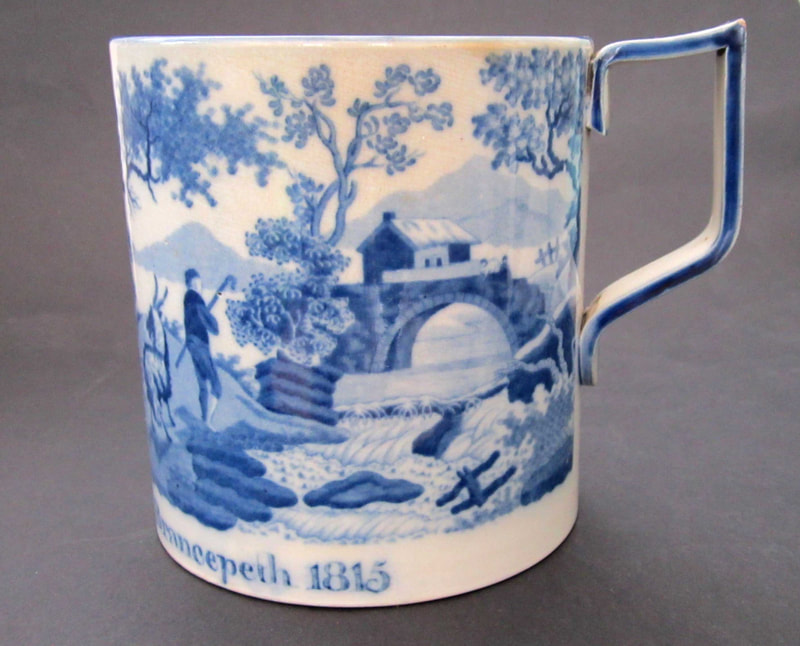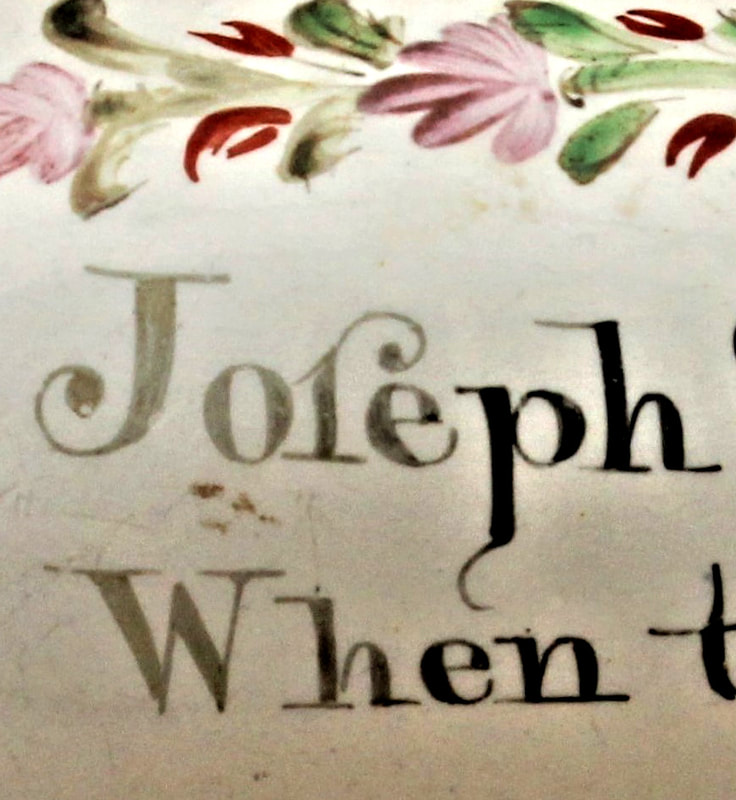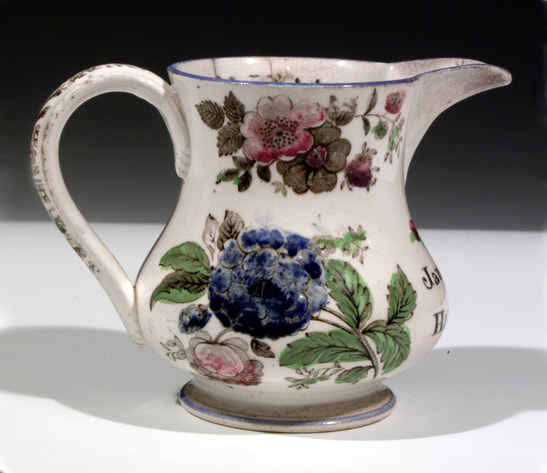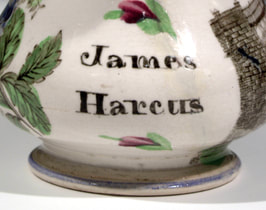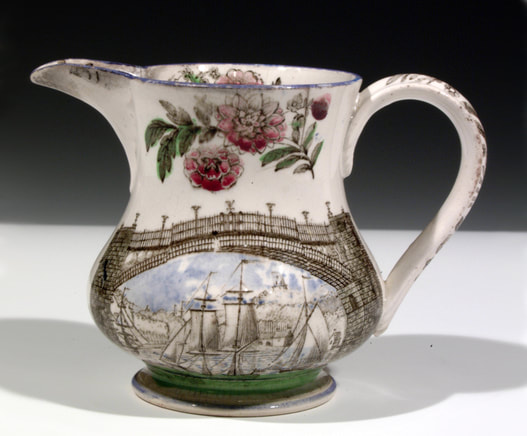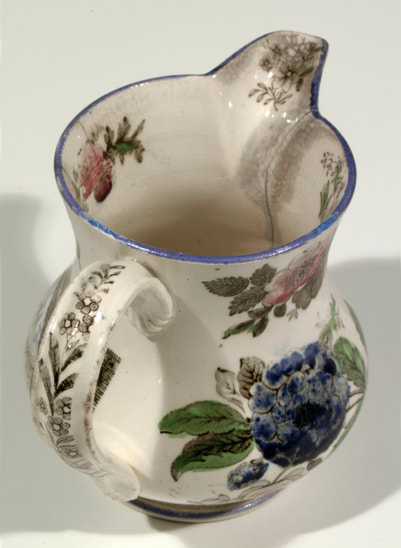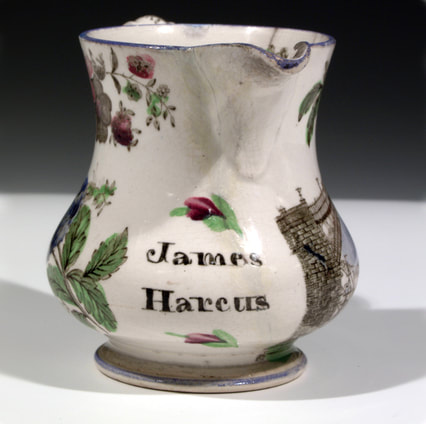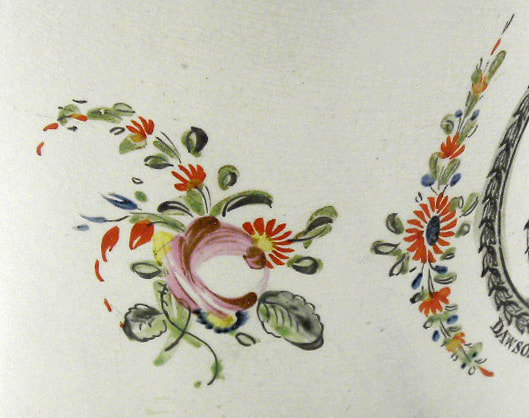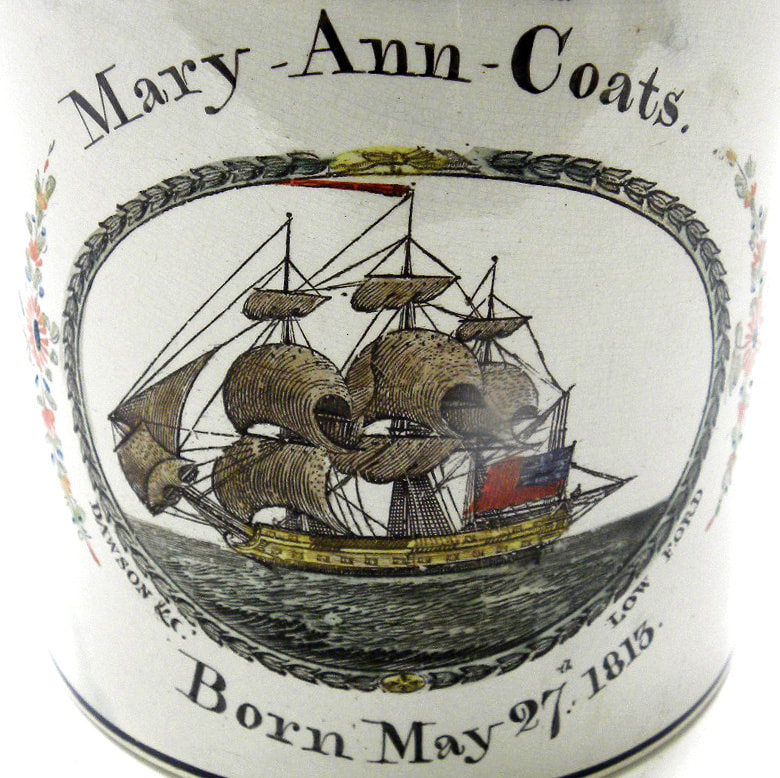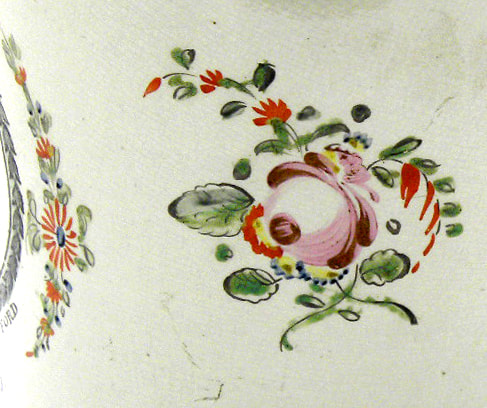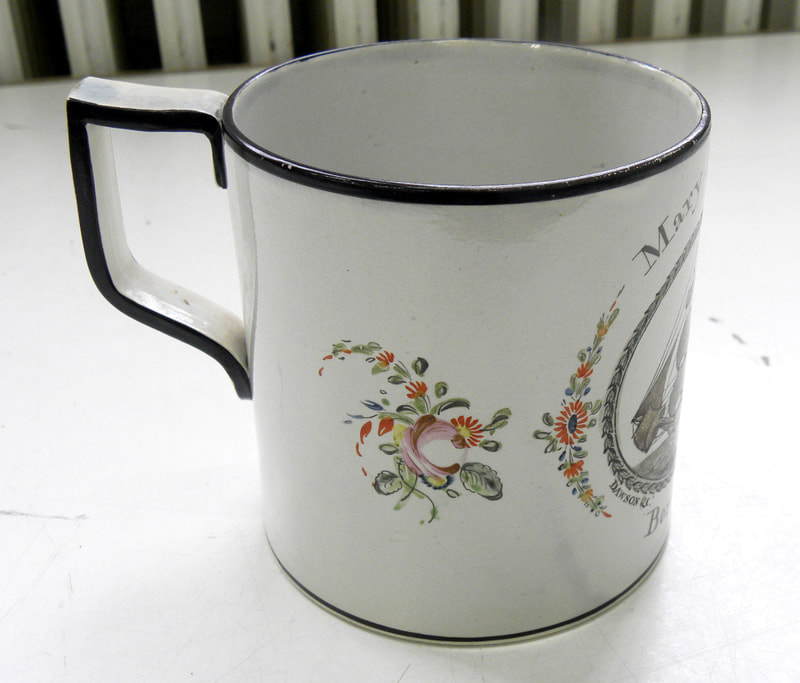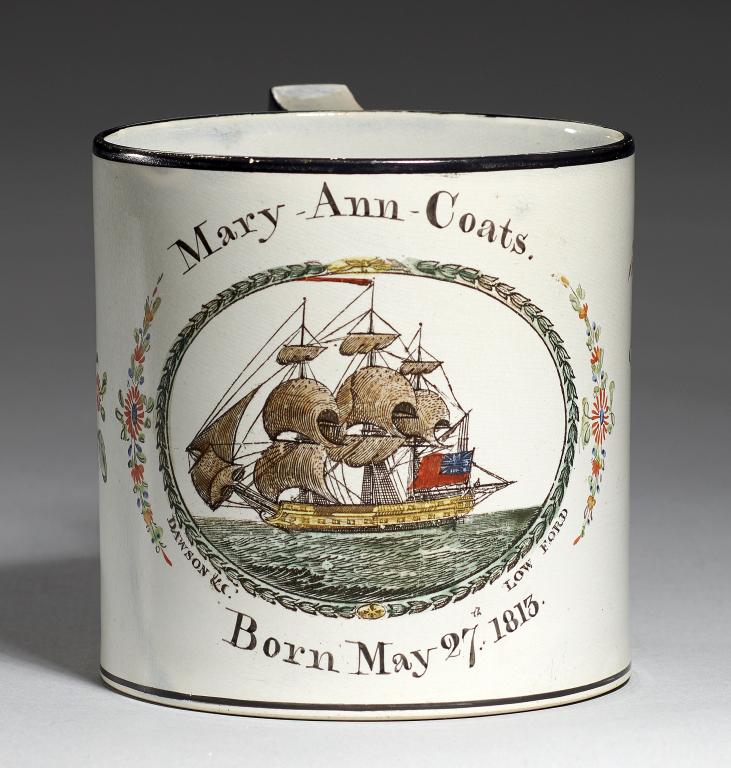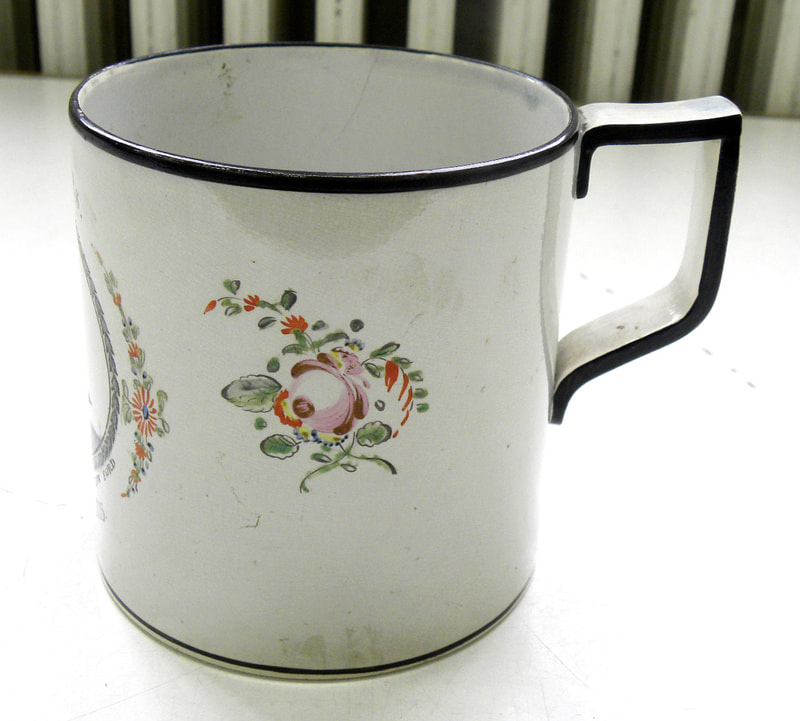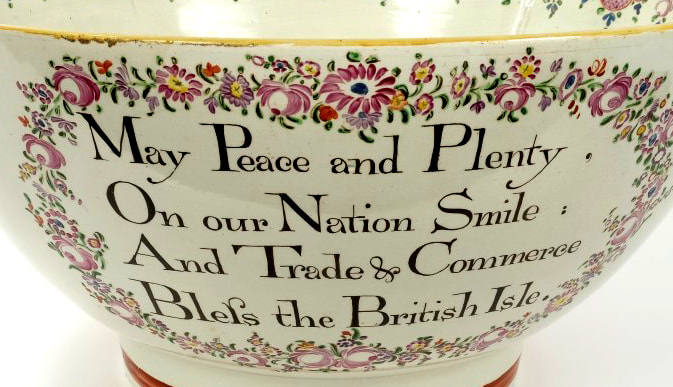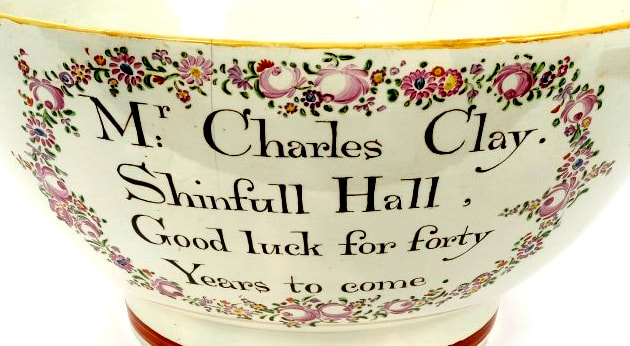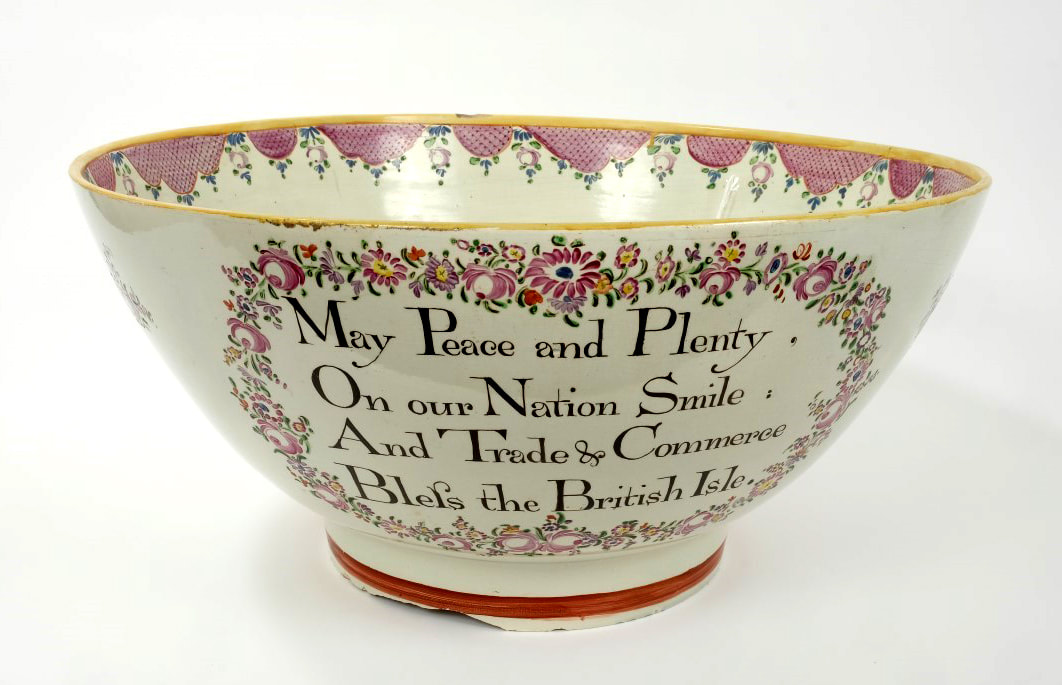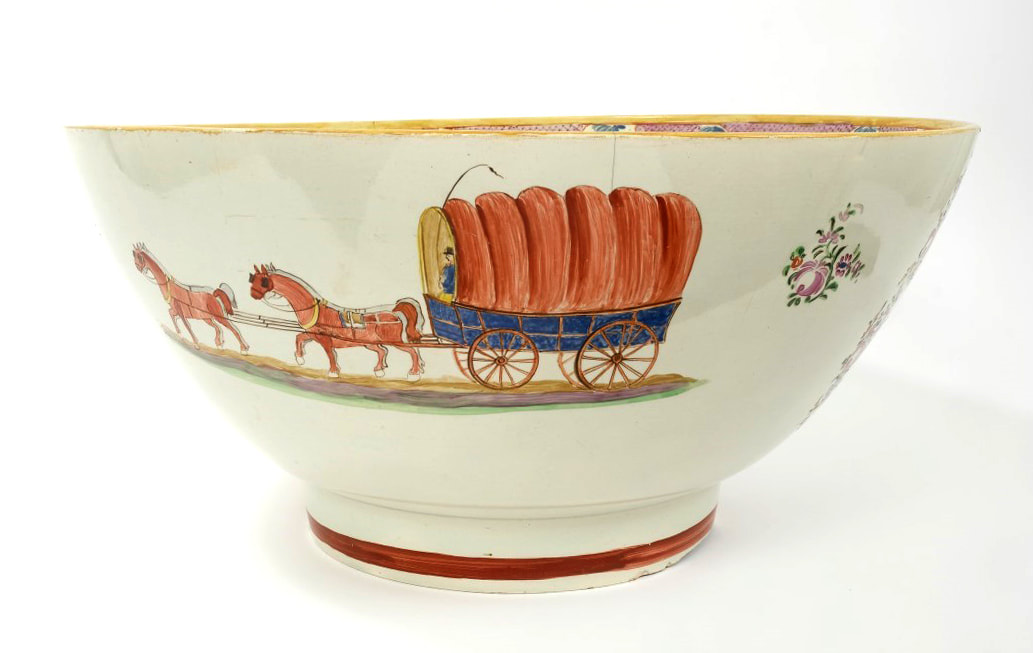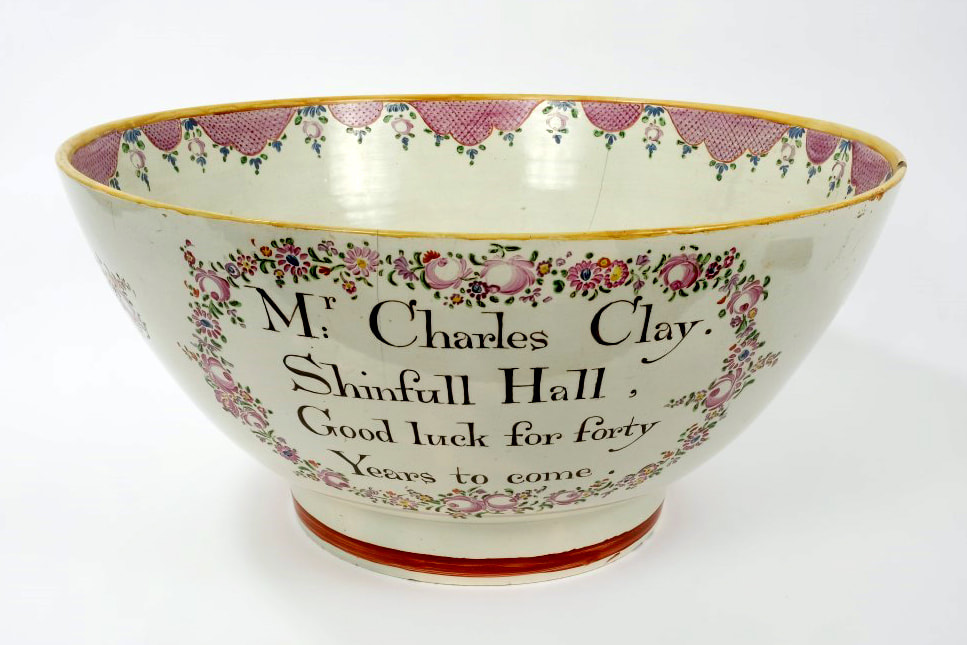Dawson inscriptions pre-1830
It is rare for items of this early period to be marked, but in the case of Dawson's, we have the fabulous jug below dated 1801 in the Sunderland Museum & Winter Gardens, Tyne & Wear Archives & Museums collection.
Perhaps the most unifying feature of items on this page is the way the pink roses are painted. Often they are surrounded by hints of blue enamel. The bottom left detail is from a mug, with an inscription for Mary Ann Coates, 1815, and printed marks 'Dawson & Co' and 'Low Ford'. The second, from a mug inscribed 'Love and Live Happy' is shown in the fine script group below. However, some caution is needed. The third detail is from an item attributed to Scott's Southwick Pottery.
Dawson frog group
Above, a mug with printed marks for 'DAWSON & Co' and 'LOW FORD'. This provides a positive ID for this squat frog with short stubby legs.
This mug, with the Dawson frog, has a daisy motif similar to the Coats mug in the fine script group below.
A similar mug with the Dawson frog. Although the flowers are different, the text is a close match to the mug above. Both North Hylton and Scott's made mugs with red roses.
Fine script group
Two early ovoid creamware jugs with the Dawson bridge 10 transfer. The inscription above, comes from the jug below. Note that the oval shapes to the far left and right of the bridge transfer's title are blank. They would later be engraved 'J Dawson & Co' and 'Low Ford Pottery'. The above right jug has flower decoration in coloured enamels.
The mug below is included here because of the similarity of the flower enamelling to the jug above, and the lettering on the jug below. The Sunderland Museum & Winter Gardens, Tyne & Wear Archives & Museums collection catalogue tentatively suggests North Hylton attribution, but it seems to fit better with the items on this page,
The mugs below have a similar double-headed rose motif to the one above. Also, compare the ampersand with the Joseph and Ann Hall jug below.
JOSEPH HALL and ANN WATSON were married 24 December 1806 at Hamsterley By Bishop Auckland and in the 1841 census were living at Monks Field, St Andrew Auckland where Joseph’s occupation was given as farmer.
The jug has a printed mark beneath the title 'Dawson & Co Low Ford'.
Although this mug is unmarked, the pattern, showing the pyramid of Caius Cestius (see Baker plate 34), and this form of square handle (also see the mug below), are both known to have been used by Dawson. Interestingly, the inscription for 1815 is printed in the same hand as the jug above (centre detail above).
Although I am unclear of the date of the jug below with a Dawson bridge transfer (in the Sunderland Museum & Winter Gardens, Tyne & Wear Archives & Museums collection), I have included it here, again, because of the similarity of the 'J' in the inscription.
Although I am unclear of the date of the jug below with a Dawson bridge transfer (in the Sunderland Museum & Winter Gardens, Tyne & Wear Archives & Museums collection), I have included it here, again, because of the similarity of the 'J' in the inscription.
The mug, with an inscription for 1815, has printed marks 'Dawson & Co' and 'Low Ford'.
A monumental punch bowl, 49cm diameter and 23cm high. It has the same fine script as the items above.
Pratt colours
This mug, from the Sunderland Museum & Winter Gardens, Tyne & Wear Archives & Museums collection, is attributed to Dawson in their catalogue. The text is more crudely painted than on the items above. I have included it here because the enamels have a similar earthy palette to the plates below.
The plate below from the Victoria and Albert Museum Collection has a 'DAWSON & CO' in a semi-circle surrounding the numeral '4' impressed mark.
I have a Van Speyk plate with a very similar impress to the plate below, so again it was likely made c1830.
